 ~by Amanda Smith I have always intuitively been aware of writing seasons throughout a year. Some months are naturally filled with demanding family or work commitments, while others provide more writing time. Throughout the years, I have tried to wrangle the seasons, to ignore natural rhythms, in order to be consistently productive each month. Seasons do not easily conform to human whim. Anyone who has spent a year in New England knows one can cry, and cajole, and yell at March to be springy until the cows come home, but lovely weather does not arrive until mid-April. Similarly, writers can plan and plot and highlight and set timers, but life’s seasons continue to roll one into the other undeterred by our best organization. So what is a writer to do? Jerry Spinelli famously advised to “write in the cracks,” which I used to embrace with weed-like ferocity. I tried to force my writing into every possible crack, exhausting myself and probably frustrating my family. There were times when I literally ran back to my desk after tossing another load of laundry into the washer, not to waste “a crack” - yelling at March to be warm. I can’t say that was super productive. This year, I took on a new job that offered zero cracks. If allowed, this job would bleed into every tiny line like red lipstick on the wrinkly lips of my days and weeks and months. Don’t get me wrong, I love my job. But it’s a lot. Even in this tenacious job, the ever-present heartbeat of my writing seasons was present. So I listened. I paid attention. And when, at a 24 Carrot Writing meeting, Megan mentioned that summer traditionally is a slower writing time for her, I sat up. She also experiences writing seasons? Curiosity overcame me. What really, are my seasons? I pulled out my trusty bullet journals of the last four years and ran some stats. And here is what I learned, regardless of my career change. For me, January, February, and November are my most productive writing months (hello winter)! The summer months have their own rhythm, but are a close second, while, surprisingly April, and December are not too far behind. However, like clockwork, writing grinds to an alarming halt every March (maybe it’s all that yelling at the cold!) and May. “How is this information useful?” you ask. Knowing my natural writing seasons helps me embrace them rather than fight them, and that brings contentment to my writing schedule. When setting yearly goals, understanding writing seasons helps me plan big tasks for the predictably productive months. It allows me to be kind to myself during the months that are clearly already stacked with other responsibilities. Rolling with the seasons also helps prevent burn-out. If you are a long-time 24 Carrot Writer, you probably have records of your achieved writing goals somewhere. I would like to invite you to browse your journals, and see if you can identify your writing seasons. Because just like nature needs to take a break from all its blooming and growing and producing and buzzing, sometimes life demands that the writer takes a rest. Through rest comes restoration. And even though progress is not visible in those off seasons, just like tree roots go deep and sap flows beneath the surface, your stories are being nourished, gaining strength, becoming ready to bloom when you reach your proverbial mid-April!
2 Comments
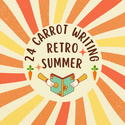 This week's throwback blog was first posted in 2019 and features a gnarly truth about goals. We know it's summer, but you still want to make progress on your path to publication and that means you can't ignore your goals! So crank up your boombox, grab a handful of Pop Rocks, and enjoy as our RETRO SUMMER continues!  By Kelly Carey Every month, according to the 24 Carrot Writing philosophy, I dutifully set both writing goals and craft goals. Every month I hit most but not all of my goals. That’s okay! We have warned against using goals as weapons. Goals are there for motivation. When I miss a goal, I push it over to the next month. Sound strategy right? I thought so, until I took a look back over the past few months and realized that the same goal kept getting pushed. Why? The truth is a bit embarrassing. I’m avoiding the hard goal. Yup. That’s what I’m doing. I’m feeling proud and organized when I sit down to work, but as a scan through my monthly goals, I’m picking off the easy targets and leaving the more challenging tasks to languish and carry over from month to month. The goals that keep getting moved to another month are ones I’m most unsure of – much like I put off doing house chores I don’t like. Laundry or vacuuming? I’ll choose laundry every time. You’ll always have clean socks to wear in my house, as long as you don’t wear them shoe-less on my very dirty floors! I was applying this same dodge and avoid technique to my 24 Carrot Writing goals. This has to stop! I can’t keep clicking off the easy tasks on my goal list. Every month I set a goal to read mentor texts. I love that task and so every month without fail (and sometimes surpassing my objective), I was able to put a nice thick check mark next to that goal. But the monthly intention to draft a new picture book? Pushed! But I’m a writer? I love writing! Writing should come before reading mentor texts! But the blank page, the self-doubt, the internal critic all made reading a lovely book that you all have already written seem like a much nicer (aka easier) task. Time to address this blatant goal slacking.  This month I’m picking one super writing goal and one super craft goal and I’m going to underline them – maybe star them – perhaps circle them with a gold pen – and I’m not going to attack anything else on my list until I have hit my super goals every month. I’m actually hoping that those easier, friendlier, can’t-wait-to-do-them goals, which will sit lower on my list, will act as extra motivation. I’ll want to get to those happy place goals, but I’ll have to tackle my super goal first (aka my do-not-pass-go, go-directly-to-them goals!). I’m a little nervous, but I think it will make me more thoughtful when I make out my monthly goals and I’ll be leaning on my 24 Carrot Writing crew to keep me motivated. I bet I’ll feel fantastic when I hit those super goals and that will be worth tackling the hard stuff first! Take a peek at your own goals. Set solid, measurable, and challenging goals. And make sure that you are not hiding behind the easy targets on your list like me! If you were, consider highlighting a super goal, a must do goal, and don’t let yourself avoid it. And now I’m off to do some laundry – just kidding! I’m off to vacuum! Hard stuff first! I’ve got this! 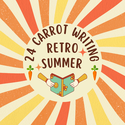 This week's throwback blog was first posted in 2018. This rad post recognizes that you may be looking to catch a wave this summer, but offers tips to make sure your don't wipeout on those writing goals! Enjoy as our RETRO SUMMER continues!  By Annie Cronin Romano Summer is here. It’s a time for sun, sand, and sangria! A time for hanging out with friends and family, relaxing vacations, and outdoor fun. So, my fine writer friends, where does your writing fit into the summertime equation? Because, as most of us know, summer is also notoriously known as a time for slacking. Don’t be a slacker, my writer friends! This is where those writing goals come in handy. Hopefully you included that “forgiveness clause” into your writing goals (see Set Your Writing Goals With a Little Forgiveness, 1/23/18). But if you didn’t, or if you haven’t set your summer writing goals yet, here are some tips for keeping the ink flowing while enjoying this active time of year. Tip #1. Going on vacation? Take a journal with you and write in it daily. It doesn’t have to be long. Just a few reflections on your day, or perhaps a description of a scene that you don’t want to forget. Maybe you came up with some story ideas. Jot them down. Keep your writer’s mind active even when you’re not working on an actual story. Tip #2. Read! What better way to become a better writer than to read consistently. Writers hear it all the time and, naturally, love books, so there’s a good chance you read regularly anyway. But in case time is more elusive for you the rest of the year, take some time this summer to crack the spine on a few books you’ve been wanting to dive into. You may notice some new writing approaches or styles along the way. Tip #3. Use your phone’s note-taking app. Even if you don’t have time to do much extended writing, sparks of inspiration may strike, and you probably won't have your laptop or notebook available if you’re at the amusement park or on a hike. So pull out your phone and type yourself a brief note. Store that idea or inspiration away for another time. Tip #4. Take pictures, especially of unusual things. Vacations are full of picture taking opportunities, but step away from the selfies and snapshots of family, and take some random “slice of life” shots. Then use those images later as writing prompts. I know. Brilliant, right? You never know what the lens will capture. Your next story gem could lurk in those precious photos! Tip #5. Enjoy! After all…it’s summer! Happy writing! ~Annie  Art by Janine Nel. Art by Janine Nel. ~by Amanda Smith A couple of months ago, I was prattling my mental to-do list aloud while my husband patiently listened. “… and I still have to write down my monthly goals before our 24 Carrot meeting tomorrow,” I said, running out of breath, and steam. And time. His eyes glinted mischievously. “Just copy last October’s goals,” he said. Wrapped up in my busyness, I retorted, “If I could just copy last year’s goals, that means our method doesn’t work very well, does it?” But wait? Does it? His silly suggestion intrigued me. 24 Carrot Writing celebrated its eighth birthday this year. For eight years (more actually, because we were an accountability group before we were a blog) I’ve religiously set monthly goals, checked them off, and reported back to my partners. Our whole premise is rooted in the idea of setting monthly goals and rewarding ourselves for reaching those goals. But the elephant in the room asks: Does it actually work? I always check my yearly goals around this time of the year to see where I hit the mark, where I missed, and where, perhaps the road turned in a different direction. We also encourage our readers to check those goals mid-year with our June Years Eve blogs, making sure we are on track. But never have I ever checked a random month from the previous year to see how it lined up with my current journey. In the day-to-day work of writing, does setting monthly goals actually move me markedly forward? Color me curious! So, with a hint of trepidation, I flipped back to October 2021 in my beloved bullet journal to reread my goals.
What about other 24 Carrot writers? I asked them to peek back at their goals. Kelly:
In the past Kristi had a running list of tasks she’d cross off upon completion, but in January 2022 she joined our accountability group and took up monthly goal setting. One of her January goals was to revise a picture book. Her goal for this manuscript was to send it to Gnome Road publishing when their submission window opened in March. ALPACHAS MAKE TERRIBLE LIBRARIANS will hit the shelves in 2024, published by Gnome Road!
The trend is consistent: projects that were started are now complete, rewrites and revisions occurred, picture books went from concept to query (with all the appropriate in-between steps!), some projects carried over from month to month (oops), but eventually, they get done (or end up in the “darlings file”). Beautiful, inspiring forward motion. By Jove! It works! Would we have done some of these things, even if we hadn’t set them as monthly goals? Likely. But would we have done all of them in a timely manner? Definitely not. To be certain, the smaller things, such as those poems, would have fallen off my radar, and I would have missed out on the joy of this anthology to come. When our kids sometimes feel overwhelmed by the size of a task, my husband would ask: “How do you eat an elephant?” One bite at a time. In the elephantine cycle of writing, revising, critiquing, polishing, querying, waiting, signing, selling, marketing, promoting, doing-it-all-over-again, monthly goals are manageable bites. So this January, yes, dream big and set those yearly goals! But then commit to bite-sized monthly goals, break them up in daily tasks, and keep moving forward. And every once in a while, peek back and see your progress – the biggest, sweetest, brightest carrot of all! To learn more about my bullet journal, and how you can also keep track of things like monthly and yearly goals, check out this blog.  Guest blog by Elisa Boxer First of all, I’m delighted to be here! 24 Carrot Writing has felt like a friend from the very beginning. It was the first blog I turned to for insight, inspiration and community when I was pre-published, fielding rejections (that one hasn’t changed), and wondering whether my words would ever become books. With two picture books in the wild, three on the way this year, and three more under contract, I’m here to tell you to keep at it, and keep the faith! In this busy year of launches, writing, and revising, I’ve had to be extra diligent about organizing, prioritizing and protecting my writing time. And while I wasn’t completely aware of any concrete process I’d been using to do that, thinking about a topic for this blog post has actually helped clarify a three-pronged method that I have been loosely following, that I will now follow even more specifically, and that I am happy to be able to share! I’ve broken it down into three questions: 1. What wants to be worked on? 2. What time can I carve out for it? 3. What intention do I have for it? What wants to be worked on? I’ve phrased that in the dreaded passive voice for a reason. To me, each project has its own feel; its own energy. Like a living thing. And it’s our job to tap into that energy. Try this: Think of one of your works in progress. Really focus on it. How do you feel about it mentally? Emotionally? Do you feel a sense of possibility? A spark? A readiness to connect with it and move it forward, even in some small way? Or do you feel resistance, like this one might be better put aside for the time being so you can work on something else? Now how do you feel physically? I measure this by a sense of expansion and contraction in my solar plexus. When you think of this project, do you feel lightness and openness (this is the one!), or tightness and constriction (maybe not this one right now). I go through each project and assess each one, paying attention to these feelings. Kind of like I’m opening the door to check on them. This all goes out the window, of course, if I’m meeting a deadline. Then I just have to plow through any resistance. But for example, I’m writing this blog post two weeks before it’s due, because I woke up and felt that niggle of “write meeee!” even though I had planned to work on something else this morning. What time can I carve out for it? This is a helpful re-frame for questions like: What do I have time for? and Where can I slot this in? The truth is, we’re all so busy and have so much going on, the only writing time we get is the time we proactively carve out for it. Writing time, in my experience, doesn’t ever present itself. It has to be actively dug out of a busy schedule. So, each week and each night, I will look ahead and pen in blocks of space for works in progress. Some days it’s only a 15-minute block for a writing sprint in between calls, meetings and appointments. Other days it’s a 2-3-hour block for deep work. But if I don’t commit to carving out time in advance, specifically for writing, other things will move in and take over that space. What intention do I have for it? Once I’ve identified the project that’s calling out for progress, I set an intention for it. Sometimes that intention is a short writing sprint where I set a timer, close all open tabs, turn off all notifications, and write nonstop, as much as I can, in the allotted minutes. Examples of other intentions include: Writing a thousand words, brainstorming titles, doing a revision, coming up with a more detailed secondary character, or putting together a bibliography. Some days my intentions are things like securing photo permissions, organizing my research files, or lining up interviews with sources. The key to setting intentions, for me, is to make sure they’re do-able. Kind of like writing items on a to-do list that you know you can complete. If something is more of a stretch, I consider that a goal, rather than an intention. Goals are great too, but intentions, to me, are more manageable day-to-day. I am sending you so much good energy for whichever project wants to be worked on, the amount of time you can carve out for it, and whatever intentions you decide to set for it! Elisa Boxer is an Emmy and Murrow award winning journalist whose work has been featured in publications including The New York Times, Fast Company and Inc. magazine. She has reported for newspapers, magazines and TV stations, and has a passion for telling stories about people finding the courage to create change. She is the author of The Voice That Won the Vote, A Seat at the Table, and the forthcoming One Turtle's Last Straw. Elisa lives in Maine, and she has several more picture books on the way. Visit her at https://www.elisaboxer.com/ .
Pre-Order Elisa's upcoming 2022 books, ONE TURTLE'S LAST STRAW coming in May, SPLASH! coming in July, and COVERED IN COLOR coming in August, at Print: A Bookstore and get pre-order bonuses like prints and stickers!  Guest Blog by Valerie Bolling My husband and I set goals every year, as individuals and as a couple. In 2017, one of my goals was to explore the possibility of writing picture books. It wasn’t a SMART goal (more about that later), but it still propelled me forward. That year I reached out to people I thought might be helpful to me in my “exploration.” I went to libraries and bookstores to do “research” – reading a myriad of children’s books and taking notes. I took a children’s writing class at Westport Writers Workshop where I now teach. I wrote and revised several stories. I even participated in a Twitter pitch, entered a contest, and sent out 16 query letters. Granted, that last sentence should be deleted. It was too early for me to take advantage of those opportunities and expect success. After all, I didn’t even have a critique group and hadn’t studied picture book structure and craft sufficiently. But I didn’t know that at the time. My goals have become SMARTer over the years. A SMART goal is Specific, Measurable, Accurate, Relevant, and Timely. Therefore, instead of my nebulous goal about exploring the picture book genre, I could have written a goal like: By March 31, I will read 100 picture books. In addition to creating goals that are SMART, goals should have other components that lead to achievement.  1. Think broadly about what you want long-term, and then break that down into a smaller goal. Example
2. Name the specific steps you’ll take to reach your goal. Example
3. Be accountable to yourself and to someone else. Example
 What’s most important is that your goals work for YOU. Here are some things to consider:
I have witnessed the power of setting goals. Not just setting them, but committing to them. That exploration goal in 2017 turned into the acquisition of my debut, LET’S DANCE!, in June 2018 and its release in March 2020. I’ve continued to set goals and, as a result, have two books releasing this year – TOGETHER WE RIDE (illus. Kaylani Juanita, Chronicle) in April and RIDE, ROLL, RUN (illus. Sabrena Khadija, Abrams) in October – and more on the way in 2023 and 2024. My goal for this year is to write a chapter book series. I’m currently revising my manuscript for the first book, which I plan to share with my agent in March. What do you hope to accomplish this year, and what goals will you set to get there? I wish you all the best as you turn your goals into successes.
 ~By Megan Litwin A former K-2 teacher, I’m a big fan of schedules and routines. I know how important it can be to have a structure to the day you can count on, yet one that also leaves room for organic detours. Schedules can be powerful - and comforting - for children and adults alike. Of course, life hasn’t made it easy to keep to any sort of schedule lately. But this January, I felt determined to start off on the right foot. 2022 brings with it my debut picture book, and I could not be more excited! At the same time, that means I’ve found myself with extra balls to juggle and new roads to navigate: a website, a wonderful co-marketing group, planning for events and school visits. All very good things indeed. But all NEW things, too. Now, besides time to write (to daydream, draft, revise, and more), I need a chunk of time just to keep up with being an “author.” No matter where any of us are on this journey, there is a certain amount of attention that needs to be paid to the business side of things. But how to make time for these different roles, without dropping any balls or feeling frazzled? I needed a comfortable routine I could count on. First, I thought about the time frame of my work day (something that looks different for everyone). My best work hours are absolutely when my kids are in school. Then, I thought about the flow. I knew I wanted to fiercely protect my writing time, no matter what got thrown my way each day. So actual butt-in-chair writing is the morning’s first work. I’ve committed to at least one hour a day for that. Or more! But setting a realistic minimum helps me stay true to that goal. If I’m in the groove and really deep into the work, that could stretch by hours – and I love when it can. Or I might write for just that hour and then do something else writing-related, like critiques. There is a certain amount of open-endedness built in. And a whole lot of morning coffee… No matter how it’s going, by the time lunch rolls around, it’s time to switch gears to author business. Choosing ONE focus per day helps, and that focus varies with deadlines and such. I might work on my newsletter, write reviews, or make pins on Canva (where I definitely can fall down the rabbit hole…). But when these tasks are not creeping into my writing/craft time, I actually enjoy them! After the writing and author work, I scheduled some reading time. Yes, I said “scheduled reading” – because it’s important to me, and my routine should reflect that. I might read a new pile of picture books, some poetry, or a beautifully crafted chapter book. My children get home around 2:30, so scheduling my reading to coincide with that allows me to model my commitment to reading AND encourages them to join me with their own books. Win-win! And finally, we all have many more roles and responsibilities other than writer/author/reader. I might have an appointment, get called to substitute teach, or have a sick child. And even on a perfectly organized work day, it is my role as Mom that is most important to me, and that one requires most of my attention once my kids are home. At that point, I tuck the work away and promise to return to it tomorrow, just like I would if I were leaving the classroom or office. Schedules work best when they are flexible structures. After an inspirational virtual webinar with Bethany Hegedus at the Writing Barn, where she talked about setting goals for each quarter of the year, I realized that maybe schedules could also be seasonal structures. I decided to call this a WINTER work schedule, and I already felt a lot less pressure to make it perfect. It may change when spring arrives, and then change again to fit the cadence of my summer days. But it suits me right now. It makes me feel full and warm – because I am making space for what matters to me, day in and day out, as this new year begins. And…it is an acronym!! Because, after all, I’m forever-at-heart a primary school teacher! A WARM Winter Work Schedule: Writer Author Reader Mom (*etc.) No time slots. No word counts. No pressure. These are simply the daily roles I want to spend time on, and in this order. What kind of an overarching structure works for YOU? What does your “winter writing season” look like? I hope it is warm and wonderful and full of whatever you need…right now.  Megan Litwin is a children's book author and regular contributor for 24 Carrot Writing. Her debut picture book TWINKLE, TWINKLE, WINTER NIGHT, illustrated by Nneka Myers (Clarion Books) will hit the shelves October 2022. To learn more about Megan visit her at www.meganlitwinbooks.com/.  ~By Amanda Smith You know those days where you spend an entire day revising a picture book manuscript, making dummies and cutting your manuscript into little strips and studying the dialogue to make sure your characters’ voices are distinct yet consistent? But at the end of the day nothing looks much different. Or those days you research agents to query, and after many hours, have nothing more than a list to show? Do you sometimes feel that drawing up maps or house plans for your novel, or filling out character sheets are wasting writing time, because no actual words are added to your WIP? A lot of the work we do as writers, cannot be measured in tangible, concrete ways. It is easy to discount these aspects of our work. Yet, all these things are part of the writing journey and we need to acknowledge them as valuable. That is why, at the beginning of this year, I knew I wanted to track my writing progress in a way that included all these aspects of writing. Enter: The bullet journal. Wait, hear me out. I’ve also looked at bullet journal blogs and thought What is this chaos? or This seems like a giant time suck. But that is the beauty of a bullet journal: You can make it exactly what you need it to be. To have a journal that functions for you, there are a few questions to answer: 1. What is the purpose of your bullet journal for you? What do you want it to do? Some authors, like Kate Messner, use one journal to manage all aspects of their life. If that sounds ideal to you, I encourage you to read Kate’s blog regarding bullet journaling here. However, I needed something dedicated to writing and writing-related business ONLY. The rest of my life, my children’s schedules and dentist appointments still went in a daily planner. What I needed was a home for all things writing. 2. How decorative do you want it to be? I like pretty. I buy planners, folders and notebooks based entirely on looks. I want beautiful covers AND decorative pages inside. Very early on in my research I realized that, if left unchecked, the bullet journal, instead of the writing, would become the project. I could easily spend all my time making it pretty, with swirly calligraphy and coloring pages. But that was not the purpose. The journal was to be my tool. I settled on a simple, functional format, with a little pretty on each page. I do not spend more than an afternoon a month to prep the next month’s tracking pages. (I would not recommend setting up your entire journal at the beginning of the year. As you and your journal grow together and get used to one another, you are going to want the freedom to tweak the format.) Also consider size here. I wanted room to spread out and use sticky notes and notecards, so my journal is 7X10 inches. 3. What do you need in your journal to move you towards reaching your goals? I took some time over my Christmas break last year to research other writers’ bullet journals and noted which components would be helpful to me. Inspired by M.M Chouinard, I jotted down what I wanted to track in my journal. Here is where I landed: A Writing Dashboard with all my projects and in which stage of the writing journey they are - an overall view of all my current projects. I love using sticky notes on my dashboard, because I can easily move projects from the “Drafting” heading to the “Revision” heading as the project moves along. A place to track yearly and monthly goals. The image shows my monthly goals for September, but I also have a page in the front of the journal where my yearly goals are listed. I check in on those quarterly to see if I am on track. I like to tally reading with my monthly goals. Some writers have separate book logs in their bullet journals, while others like to use a coloring sheet glued into the journal. Towards the front of the journal I have a page to track overall progress in my individual projects. For novels I mark progress by scenes. For picture books, I check a box every time I do a revision. For every month I have a writing log to jot down daily word count. For revisions I write the section/ scene I revised and its changed word count. Notice the celebratory sticker at the end of the month? Don't forget to reward met goals with happy carrots! On the page next to my writing log, I use Five Things a Day to track other writing related work such as agent research and days spent on querying, critiques, blogs, research, and so forth. Even though I hardly ever fill all five boxes for the day, I do learn a lot from looking back at these pages. I have learned, for instance, that I prefer not to write and revise on the same day. I have a section designated for monthly blog meeting notes and blog related business. If you do not have a blog, you might want a designated space for website planning and maintenance, or social media strategies. A grid with sticky notes keeps track of queries for each project. I still keep detailed records in a spreadsheet, but with this tool I know at the drop of a hat exactly where which manuscript is. Having everything writing related in one place made this a super productive writing and querying year for me. What do you need to track your progress and other writing related notes? I would like to encourage you to take some time over the next few months to come up with a custom-made system that will empower you in your writing journey.
 ~By Amanda Smith “This year’s felt like Four seasons of winter And you'd give anything To feel the sun” - Reason (Unspoken) When I first heard the opening of this song by Unspoken, everything in me cried, “YES! THIS!” This year brought more unexpected changes and interruptions to my writing life than any before: unexpected travel, lovely visitors, a left hand immobilized for four months due to a broken wrist, and an extended stint as a long-term substitute teacher. Now, it isn’t all bad. But it is all busy. I’m not about to throw a pity party (been there, done that), but I do want to address the reality of months, or years, not turning out the way we anticipated when we first set those shiny New Year’s writing goals. There had been times like this in my life before, where I couldn’t find space for creativity or writing due to The Urgent pulling at me. There had been years where I had walked away from writing. And the return had been slow and laborious. This year, amid Nor’easters of life pummeling me, I was resolved. This year, unlike other stormy times, I’d kept my one hand on my writing. In order to do that, I had to adjust my goals. I am not pushing to finish my novel before the end of the year as I had planned. I am working on smaller projects that can endure interruption with more grace, such as querying and research, revisions on picture books, writing poetry and other shorter pieces. I keep moving forward, even if it is at a snail’s pace. I keep learning, thinking and observing. I spent most of my immobilized summer reading mentor texts, new publications, and craft books. I keep active in my writing community. The mere fact that I have a critique group expecting a manuscript from me, drives me to write, or revise. Giving feedback on their work, keeps my head in the game. Connecting with other writers at events, invigorates me, and reminds me of who I am amid the blizzards. And meeting with my monthly accountability group, keeps me setting and checking off teeny-tiny-but-moving-forward-goals. I keep making space to create. So coming back will be easier. So I won’t let go forever. Because Spring will come.  by Francine Puckly As the Summer Solstice approaches, my mind is churning with a multitude of thoughts and emotions about growth, new beginnings, and the constructive criticism that can derail or redirect our endeavors. I’m excited about the idea that in ancient times the Summer Solstice was once considered the New Year and was both an opportunity to break out of one’s normal routine and a time of merriment and celebration. In present time, the Solstice is roughly the halfway point of the year. A marking of time. A marking of our goals. And for a few of my colleagues, it’s a marking of delayed projects as a result of rejection or requested revisions by industry professionals and critique partners. How we deal with these requests and setbacks will determine how well we stay on track to meet our goals this year. A few years ago, my daughter ran for office in a student organization she had been part of for several years. In the days leading up to the election results, she had convinced herself that she had lost the election and mentally prepared for the deep and complete humiliation that would inevitably come when her loss was revealed. The morning the election results were to be announced, I asked her how she was feeling. She shrugged. “You know? I’m gonna be okay.” As it turned out, she didn’t lose the election for that particular officer position. But another classmate lost in a different race. This classmate was not prepared to lose and was ill-equipped to gracefully handle the results. Lifelong friendships ended that day. The student resigned from the organization. What had once been a source of great joy for the student quickly turned to poison. Someone needed to tell her, "You know? It's gonna be okay." Which brings us to publishing and the art of critique and rejection, dear writers. How many times have we received hurtful, soul-wrenching rejections of our work or unanticipated requests for manuscript changes and were tempted to throw it all away? Or we hear of another artist’s success and fume at the injustice? In some cases, if we can be objective, we can see that the artist’s manuscript or project had more potential than what we had offered. Sometimes the other person’s idea is more unique, more fully developed, more polished. Other times we feel cheated. We can burn bridges and claim the world is out to get us. Or if we’re smart, we learn what to do differently so that next time we can win. Sometimes, for whatever reason, it just isn’t our time. With all this summering and raining and shining, the growing season is upon us. And all gardeners know that momentous growth springs forth after a significant pruning. And we can respond by pruning words and tightening our manuscripts and possibly even pruning our egos as we realize we have more to learn. At this time of great light and idleness, try to approach your projects with enlightenment and consciousness with respect to what needs to be done to move forward. If you’re reeling from the pain of rejection or harsh criticism, look for ways to celebrate the joys of the creative life. Hone your craft with the help of how-to books while you dig your toes in the freshly mown lawn. Attend workshops and free lectures. Stop by book launches to support your fellow artists and learn how authors and illustrators interact with their audiences. Read blog posts and memoirs written by authors who were “elected” this year and try to figure out how to apply their successes to your own words and journey. Regardless of the origination of Summer Solstice celebrations, a plethora of fire and sun rituals across ancient cultures celebrated light. And in noting lightness, we will be able to release burdens, doubts, and fears. Oh, and rejection. Now go. Be happy. Bask and grow in the warmth of the sun. ~ Francine |
Peruse blogs for advice and tips from KidLit creatives.
Categories
All
Archives
April 2024
Click to set custom HTML
Click on the RSS Feed button above to receive notifications of new posts on this blog.
|

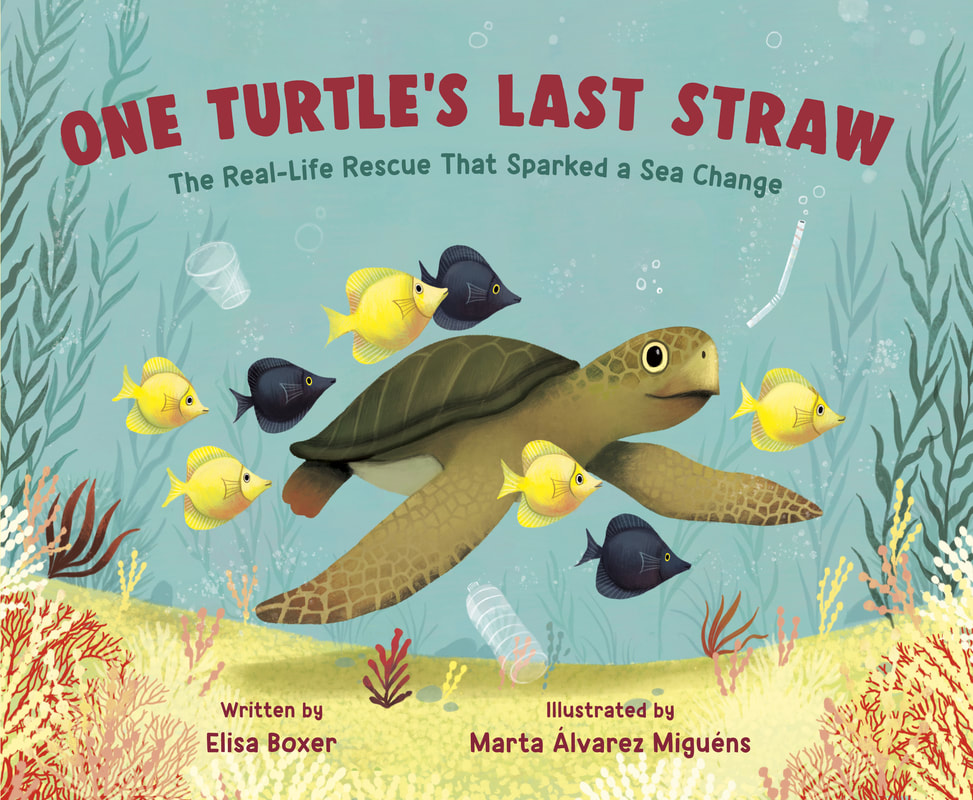
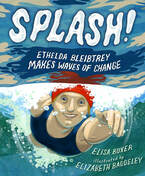

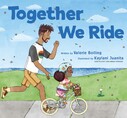
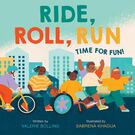
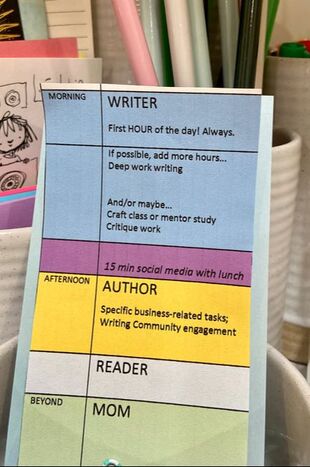
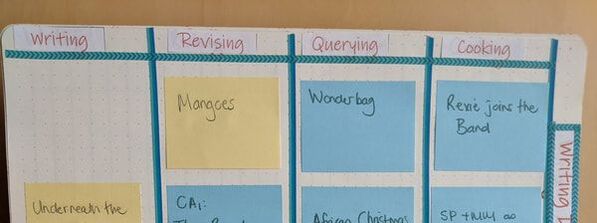

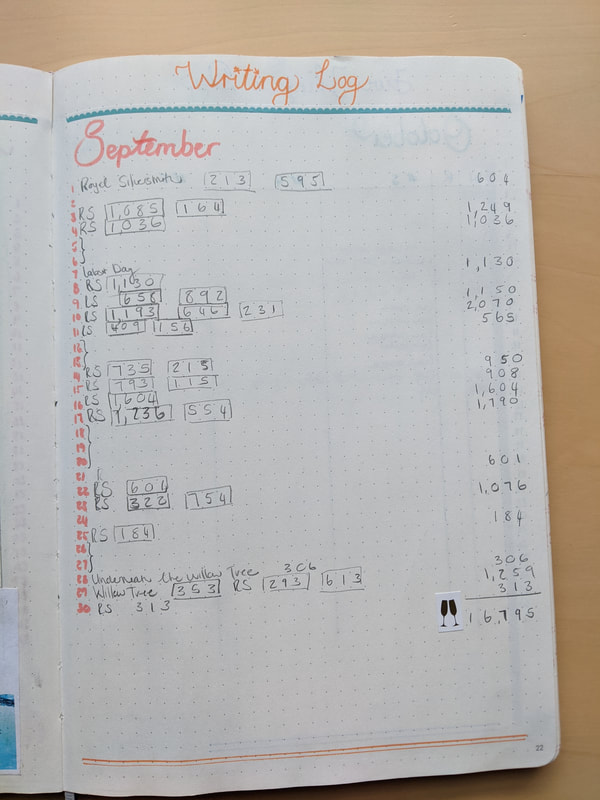
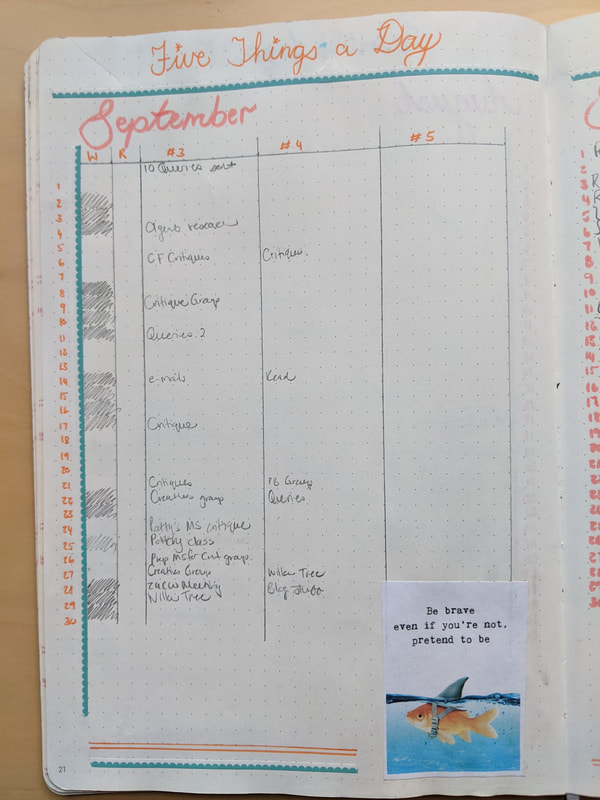

 RSS Feed
RSS Feed